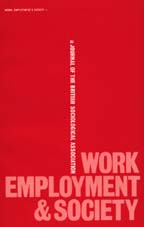No CrossRef data available.
Article contents
Changing Employment Relations: plus ça change, plus c'est la même chose? Reflections arising from the ESRC Review of Government Social Classifications
Published online by Cambridge University Press: 01 December 1998
Abstract
In 1994 the Office for National Statistics (ONS, then OPCS) com-missioned the Economic and Social Research Council (ESRC) to conduct a wide ranging and zero-based, independent review of official socio-economic classifications (SECs). The first phase of this review concluded that government SECs were still required, but that the existing ones should be replaced by a single, revised, occupationally-based SEC with an explicit conceptual rationale (see Rose 1995a). Subsequently it was decided that this revised SEC should measure employment relations, thus adopting the conceptual base of the class schema produced by John Goldthorpe and his colleagues (see Rose 1996; Rose and O'Reilly 1997: Ch.1; Goldthorpe 1997). However, while validation studies conducted on data collected in the 1980s have concluded that this conceptual base is fundamentally sound, it might be argued that the ‘flexible’ labour market and the emergence of post-Fordist organisations raise questions about whether this is still the case.
- Type
- NOTES AND ISSUES
- Information
- Copyright
- © 1998 BSA Publications Ltd




